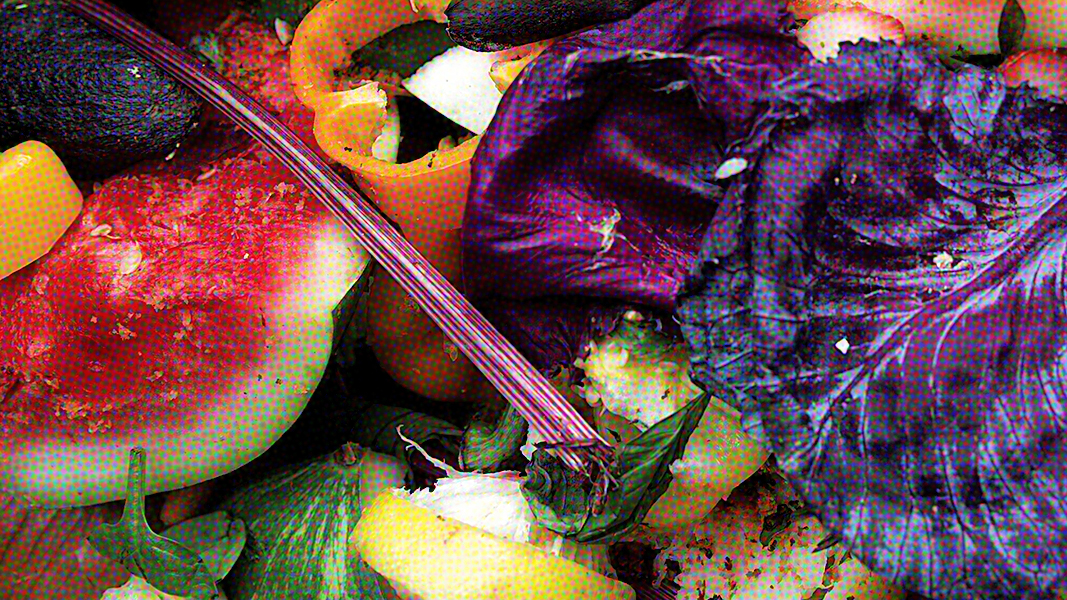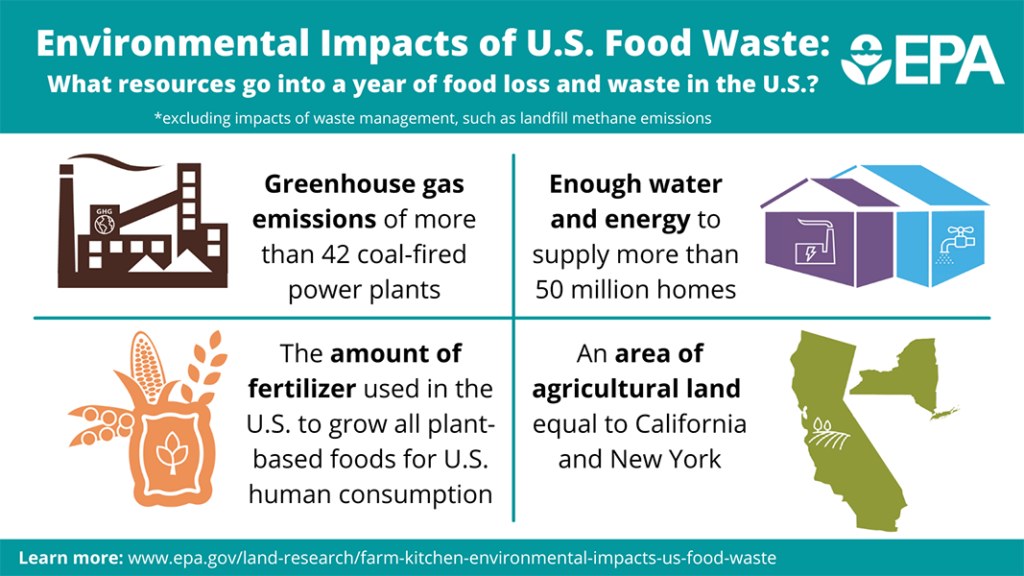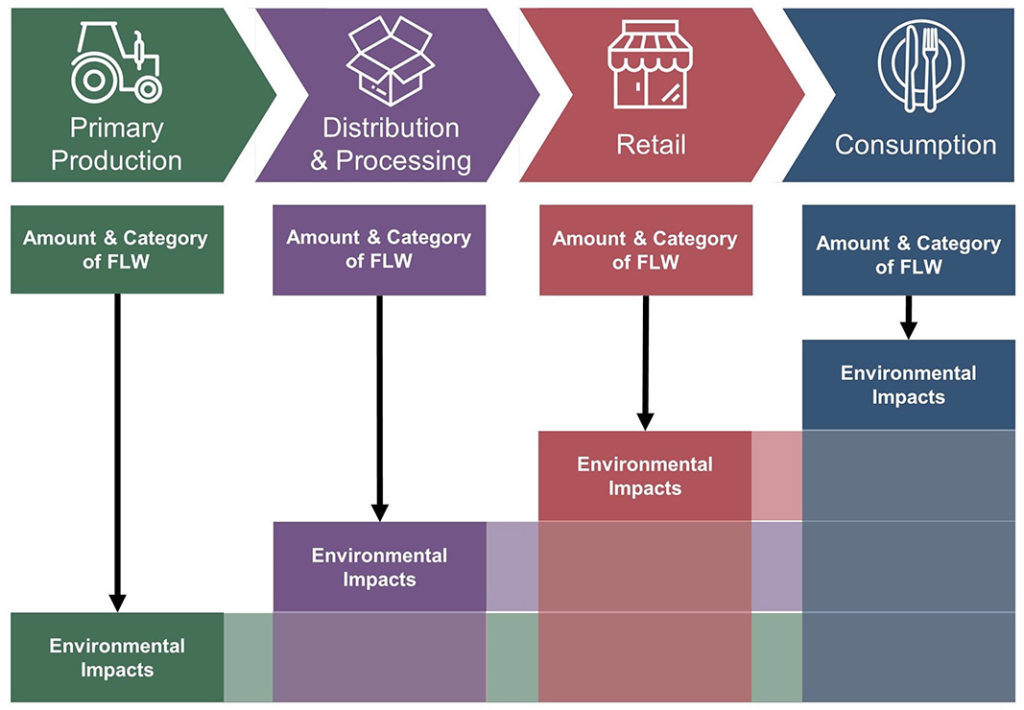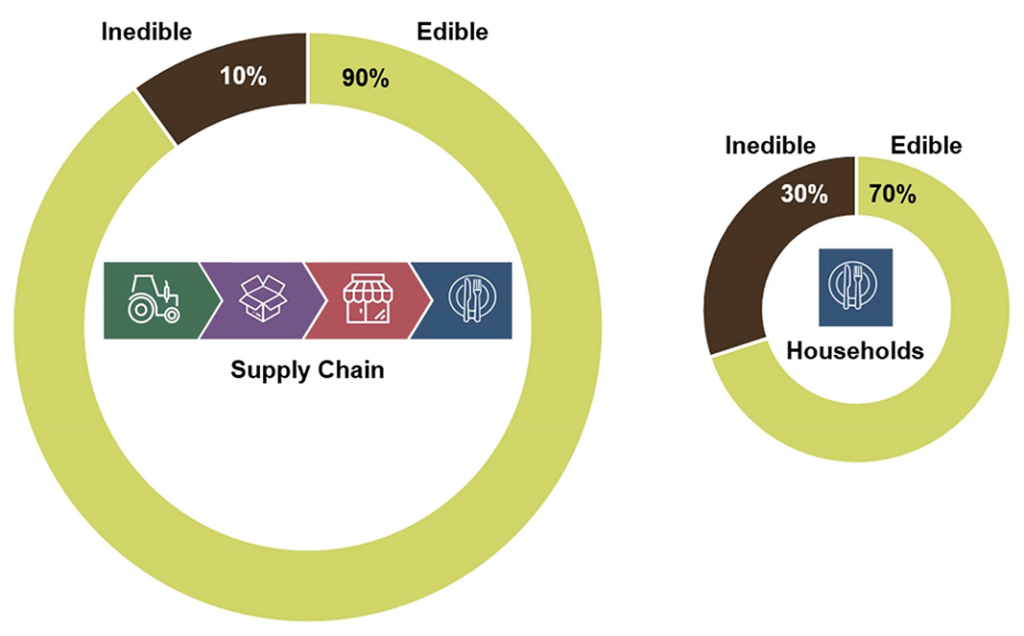Top: Image courtesy U.S. EPA
Nora Goldstein
It was almost 10 years ago when Dana Gunders, then with NRDC and now executive director of ReFED, authored a startling report on how much edible food households throw away. I remember Dana saying at the time, it’s equivalent to buying five bags of groceries and then dropping two of the bags in the store parking lot and not bothering to pick them up.
That NRDC report, “Wasted: How America is Losing Up to 40% of Its Food from Farm to Fork to Landfill,” was groundbreaking and drew national attention to not just the amount of edible food that does not get consumed, but also the imbedded resources and money that are thrown away with it. Over the years, initiatives have been launched both in the U.S. and globally to educate consumers and the food service sector about how to prevent food waste. In the United Kingdom, for example, the Love Food Hate Waste campaign launched in the mid 2000s, has helped reduce UK food waste across the entire supply chain and the home by 27%, according to Richard Swannell of WRAP, the UK organization that launched and manages the campaign.
In 2015, the United States announced a goal to halve U.S. food loss and waste by 2030. According to the U.S. EPA, which established the goal along with the U.S. Department of Agriculture, the nation has not yet made significant progress. Motivated by this reality, the U.S. EPA Office of Research and Development dove into the data on food loss and waste and prepared a new report, “From Farm to Kitchen: The Environmental Impacts of U.S. Food Waste, Part 1 (Environmental Impacts Part 1),” which was released on November 30. The report reveals the climate and environmental impacts of wasted food — from “cradle to consumption.” This includes producing, processing, distributing, and retailing food that is ultimately wasted, and projects the environmental benefits of meeting the U.S. goal to prevent 50% of food loss and waste.
A companion report, “The Environmental Impacts of U.S. Food Waste: Part 2,” will examine and compare the environmental impacts of a range of management pathways for food waste, such as landfilling, composting, and anaerobic digestion. Part 2 will include estimates on the benefits of compost utilization. EPA plans to complete Part 2 in Spring 2022; combined, the two reports will encompass the net environmental footprint of U.S. food loss and waste (FLW), says EPA. They are a synthesis of all available published estimates related to FLW, explains Shannon Kenny, Senior Advisor, Food Loss and Food Waste, at the U.S. EPA Office of Research and Development (ORD). “The Agency needed some good, conservative estimates to develop policy around. There are multiple credible estimates, which differ in scope and methodology, which together provide insights into the magnitude, distribution, and environmental footprint of U.S. FLW.”
BioCycle interviewed Shannon Kenny and Claudia Fabiano, who works on FLW at EPA’s Office of Resource Conservation and Recovery, shortly after Environmental Impacts Part 1 was released. We discussed the report’s findings, and how they will translate into national actions to reduce FLW.
Data Highlights
Environmental Impacts Part 1 calculates the resources attributed to U.S. FLW, which are equivalent to (Figure 1):
- 140 million acres agricultural land — an area the size of California and New York combined
- 5.9 trillion gallons blue water — equal to annual water use of 50 million American homes
- 778 million pounds pesticides
- 14 billion pounds fertilizer — enough to grow all the plant-based foods produced each year in the United States for domestic consumption
- 664 billion kWh energy — enough to power more than 50 million U.S. homes for a year
- 170 million MTCO2e greenhouse gas (GHG) emissions (excluding landfill emissions) — equal to the annual CO2 emissions of 42 coal-fired power plants.
”To estimate the environmental impact of FLW, researchers consider the amount of food lost or wasted as well as the type of food lost or wasted and supply chain stage at which it was lost or wasted,” notes the report. “Food wasted further along the supply chain carries more impacts than food lost or wasted earlier, since the impacts are cumulative. For example, food lost during primary production embodies the resources used to grow the food, whereas food wasted during the consumption stage embodies the resources used to grow, process, package, store, and distribute the food up to the point the food reaches the consumer.” Figure 2 illustrates the cradle-to-consumer environmental footprint of U.S. FLW.
The data analyses also found that cutting FLW in half by 2030 could reduce the environmental footprint of the current cradle-to-consumer food supply chain by:
- More than 75 million acres of agricultural land — an area greater than Arizona
- 3.2 trillion gallons of blue water — equal to the annual water use of 29 million American homes
- Nearly 640 million pounds of bioavailable nitrogen from agricultural fertilizer with the potential to reach a body of water, cause algal blooms and deteriorate water quality
- 262 billion kWh energy — enough to power 21.5 million U.S. homes for a year
- 92 million MTCO2e GHG — equal to the annual CO2 emissions from 23 coal-fired power plants
Figure 3 shows the amount of FLW that is considered edible versus inedible, by weight. Only 10% of FLW from the full food supply chain is inedible, according to the data analyzed. At the household level, FLW data indicates that a greater percentage of FLW — about 30% — may be made up of inedible food parts, such as bones or shells.
But where the magnitude of FLW really hits home is the amount of calories in uneaten food — enough to feed more than 150 million people each year, “far more than the 35 million estimated food insecure Americans,” says the report. Figure 4 utilizes a loaf of bread to illustrate this available surplus. “The calories and nutrients contained in this surplus food are critical to feeding the world’s growing population with the least environmental harm,” notes Kenny. “Diverting food that would have been wasted by consumers in the U.S. via farm exports will increase the availability of food the world will need by 2050. The literature reviewed in the report found that closing crop yield gaps and increasing productivity alone will likely not be sufficient to prevent further deforestation and environmental degradation to meet future food supply demand. Thus demand-side measures, such as reducing FLW, will be needed to sustainably feed the world.”
Another key finding, she adds, is where most of the FLW in the U.S. happens along the supply chain as compared to other countries. “The U.S. is the third largest waster of food, and wastes the third greatest amount of food per capita of all countries,” says Kenny. “And our wasted food has greater environmental impacts than that of most other countries because it is happening further downstream at the point of consumption.”
Emphasis On Prevention
On November 1, the Biden Administration released its Methane Emissions Reduction Action Plan. Mitigating food waste-related emissions from landfills is one of the actions. During the BioCycle interview, Claudia Fabiano shared a very interesting comparison with regard to emissions from food waste that is landfilled versus prevented. According to the Inventory of U.S. GHG Emissions and Sinks, landfills are the third largest source of methane emissions and are responsible for 17% of overall U.S. methane emissions. In 2019, landfill methane emissions were approximately 114.5 MMTCO2e. “Research reviewed for Environmental Impacts Part 1 estimates that preventing half of U.S. food loss and waste could reduce the environmental footprint of the current cradle-to-consumer food supply chain by 92 million MTCO2e — and that doesn’t include emissions from landfilling the food waste,” says Fabiano. “This kind of data underlies the need for a more aggressive national strategy based on prevention, including a national consumer campaign in coordination with the private sector, state and municipal governments, and nongovernmental organizations.”
Programs like EPA’s Food: Too Good To Waste — a household education campaign introduced nationally in 2016 and adopted by local governments and other institutions — have made inroads, but have been under-resourced and lack robust measurement and evaluation tools, adds Fabiano. To address this and other gaps, EPA is preparing a national strategy to prevent the wasting of food and expand organics recycling as part of its Circular Economy Strategy Series. Objectives include preventing household, food service and retail food waste; recycle any remaining food waste and enhance organics recycling opportunities; and conduct research and improve measurement. EPA plans to release the strategy for public comment in March 2022.
Fabiano points to consumer research conducted by the Oregon Department of Environmental Quality (DEQ) that analyzed what motivates consumers to change their behavior when it comes to food waste. “They found that connecting it to climate change doesn’t resonate with consumers, but saving money does. This led Oregon DEQ to launch a new public education campaign, Don’t Let Good Food Go Bad . These types of learnings will contribute to what goes into our national outreach and education strategies.”
On December 10, ORD issued a Request for Applications (RFA) that focuses on prevention. The RFA, titled “Research to Reduce Consumer Food Waste in the U.S.,” will be a significant contribution to informing future efforts to help consumers waste less food. It is anticipated that a total of approximately $1.5 million will be awarded under this announcement, depending on the availability of funds, quality of applications received and other applicable considerations. According to the announcement, “the U.S. EPA, as part of its Science to Achieve Results (STAR) program, is seeking applications proposing cutting-edge transdisciplinary research (integrating diverse disciplines such as behavioral science, psychology, economics, public health, and sociology) to develop, apply, and test innovative and creative community-engaged approaches/methods to reduce household food waste through prevention (i.e., not redistribution) in the U.S. in real world settings. Prevention of household food waste means that the amount of food available for consumption in a household that is not ultimately eaten by the household is reduced. Applicants should propose a community-engaged research project that addresses at least one of the following three pathways to reduce household food waste through prevention: Changing the U.S. food environment to discourage waste by consumers; strengthening consumers’ motivation, opportunity, and ability to reduce food waste; and leveraging and applying research findings and technology to support consumers in food waste reduction.”
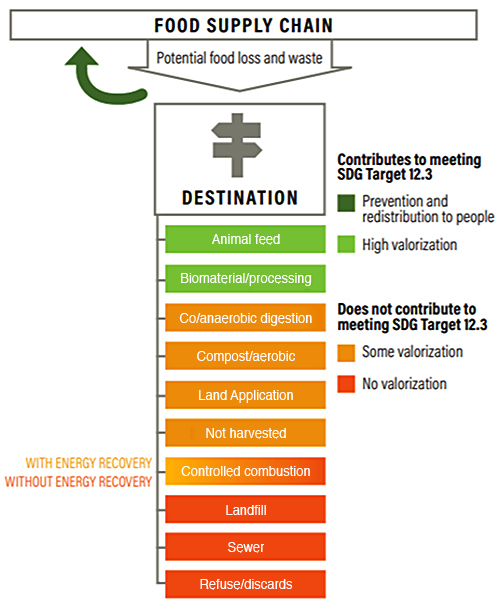
Figure 5. Hierarchy of destinations for achieving United Nations Sustainable Development Goal Target 12.3. Source: Champions 12.3
In another step to strengthen FLW prevention, EPA announced in September 2021 that it was aligning its interpretation of the food waste part of the national FLW reduction goal for 2030 with the United Nation’s Sustainable Development Goal 12.3 food waste index. This new interpretation (Figure 5) encourages investment in preventing food waste and keeping it in the human supply chain — instead of just diverting it from landfills and incinerators — and driving more significant reductions in GHG emissions. Previously, EPA interpreted the 2030 FLW goal as cutting in half the amount of per capita food waste going to landfills and combustion facilities. SDG Target 12.3 aims to cut in half the amount of food waste leaving the human food supply chain, which is defined as food waste going to landfill, combustion, sewer, anaerobic digestion, composting, land application, refuse and litter. Its focus is on reducing food waste generation.


